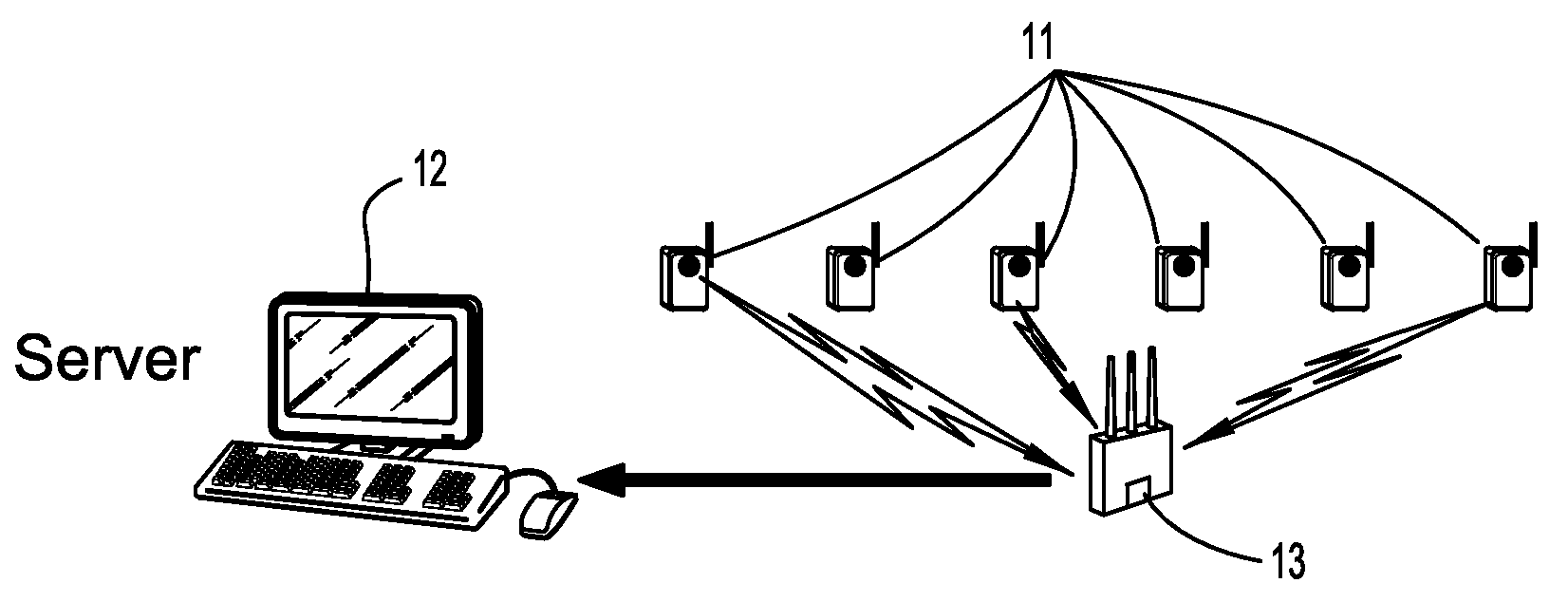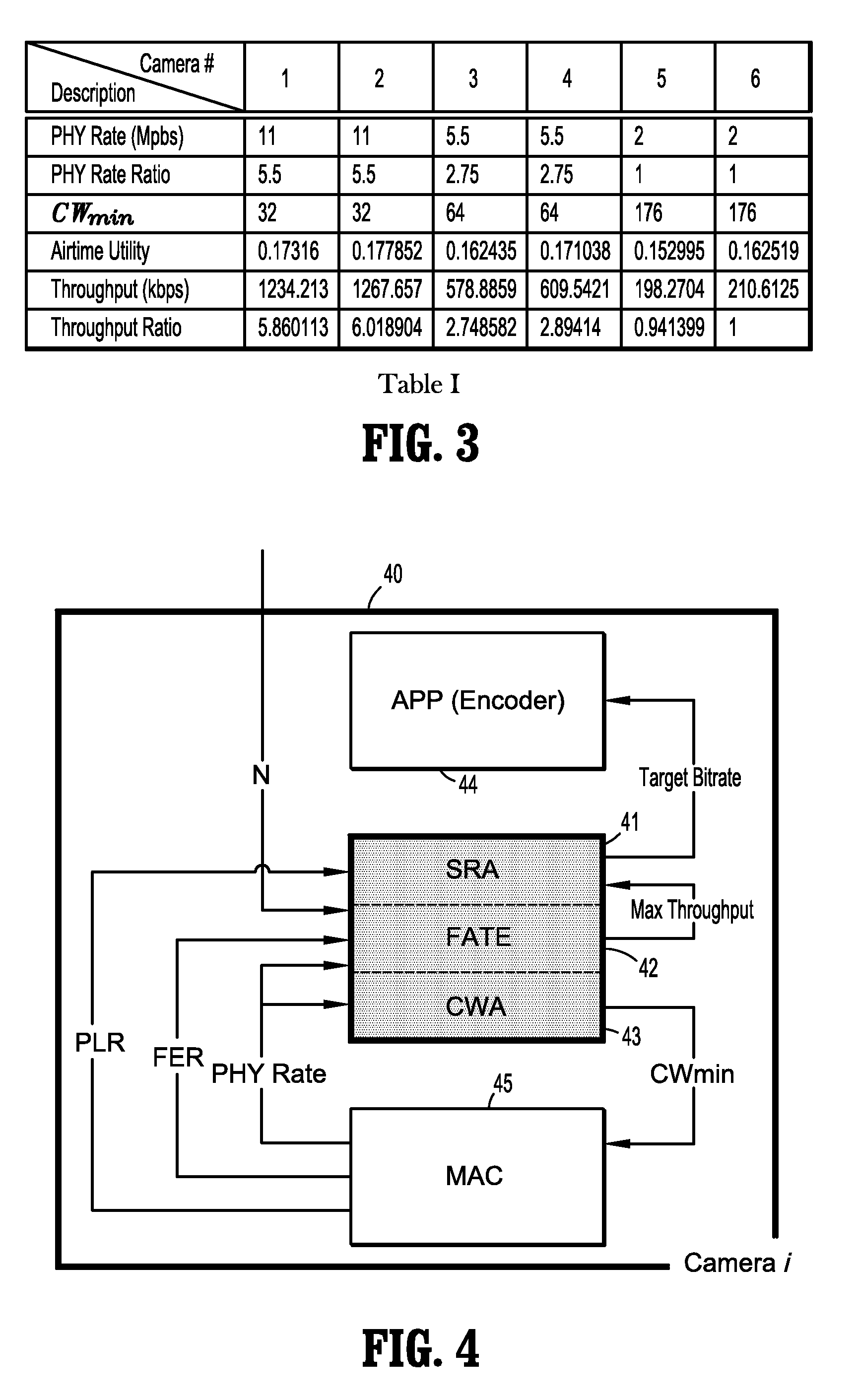System and method for distributed cross-leyer congestion control for real-time video over wireless LAN
a wireless lan and congestion control technology, applied in data switching networks, frequency-division multiplexes, instruments, etc., can solve the problems of frequent quality changes, easy failures, annoying users, etc., to improve qos and reliable operation, reduce packet loss rate, and increase aggregate throughput
- Summary
- Abstract
- Description
- Claims
- Application Information
AI Technical Summary
Benefits of technology
Problems solved by technology
Method used
Image
Examples
Embodiment Construction
[0049]Exemplary embodiments of the invention as described herein generally include systems and methods for cross-layer congestion control for video transmission over wireless local area networks (WLANs). Accordingly, while the invention is susceptible to various modifications and alternative forms, specific embodiments thereof are shown by way of example in the drawings and will herein be described in detail. It should be understood, however, that there is no intent to limit the invention to the particular forms disclosed, but on the contrary, the invention is to cover all modifications, equivalents, and alternatives falling within the spirit and scope of the invention.
Airtime Fairness
[0050]It is well known that per-station throughput in a WLAN multi-rate basic service set (BSS) tends to move quickly toward the rate of the lowest rate station in the BSS. Channel access among competing stations is managed such that stations divide the available throughput according to CSMA / CA (Carrie...
PUM
 Login to View More
Login to View More Abstract
Description
Claims
Application Information
 Login to View More
Login to View More - R&D
- Intellectual Property
- Life Sciences
- Materials
- Tech Scout
- Unparalleled Data Quality
- Higher Quality Content
- 60% Fewer Hallucinations
Browse by: Latest US Patents, China's latest patents, Technical Efficacy Thesaurus, Application Domain, Technology Topic, Popular Technical Reports.
© 2025 PatSnap. All rights reserved.Legal|Privacy policy|Modern Slavery Act Transparency Statement|Sitemap|About US| Contact US: help@patsnap.com



